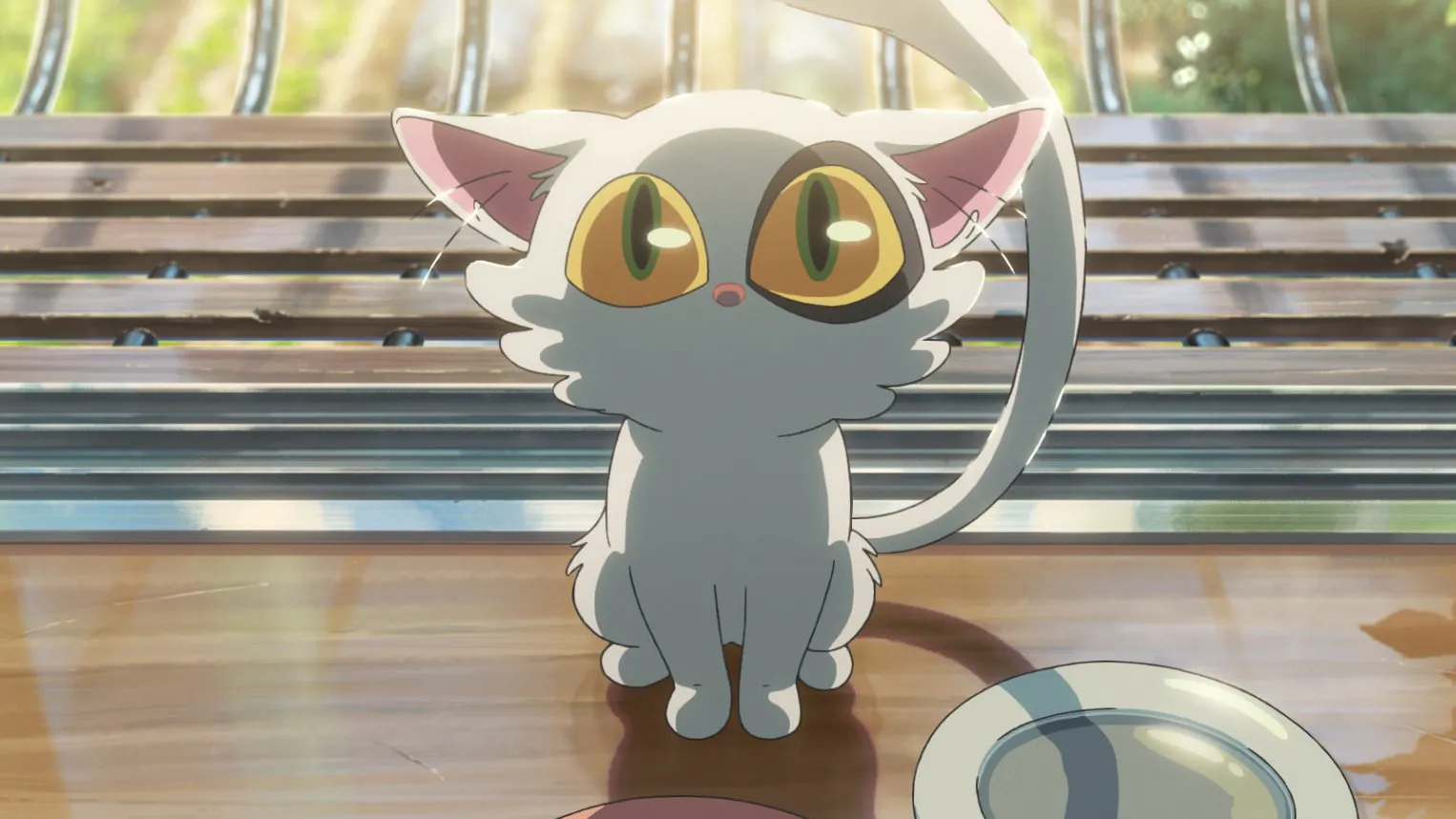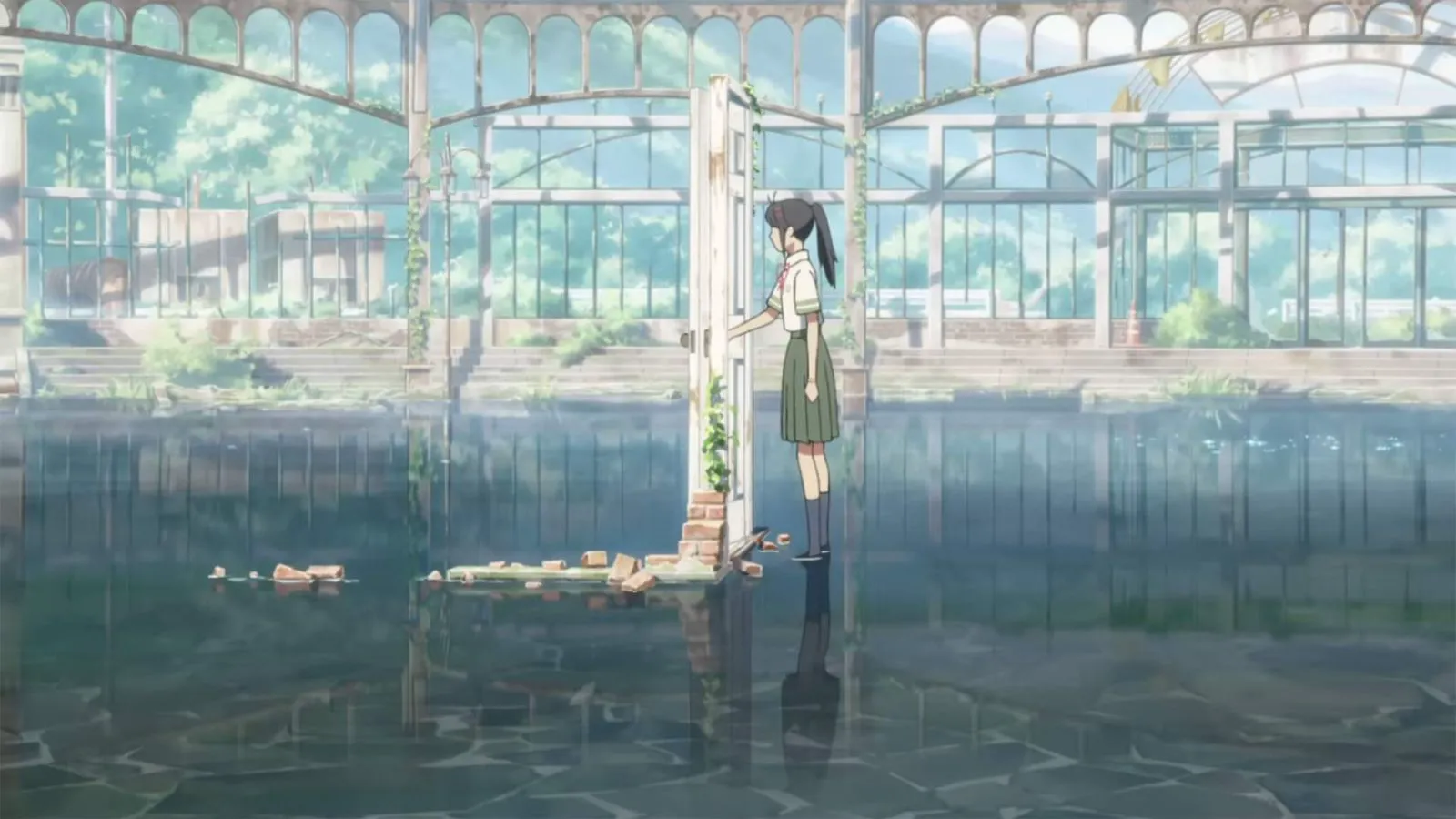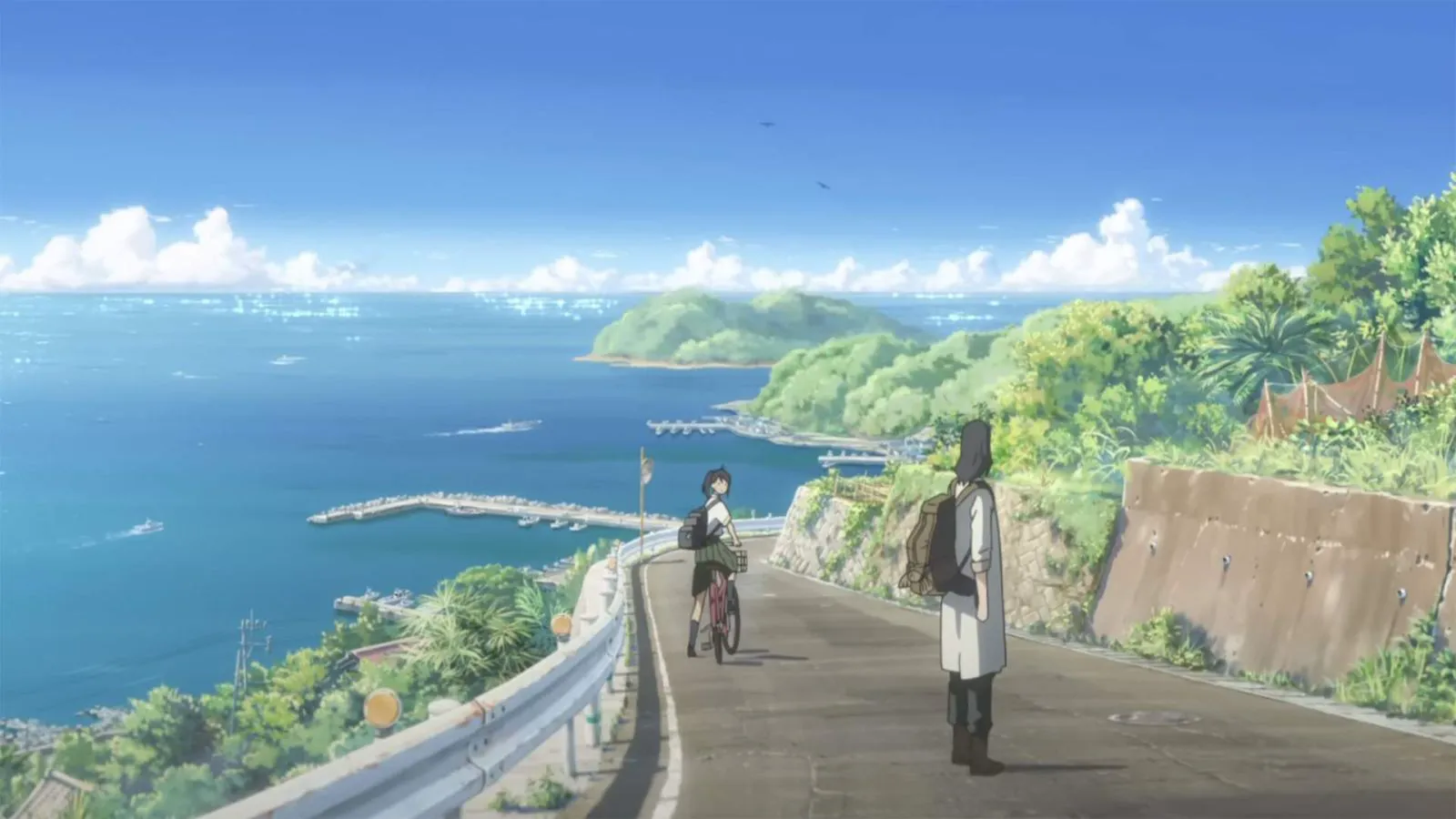In a dream, Suzume’s childhood memories come to life, where she, as a little girl, walks amidst ruins, calling for her mother. She wakes up, butterflies fluttering above her, belongings scattered around. The girl lives with her aunt, Tamaki, because her mother died over a decade ago: their town was first destroyed by an earthquake, then engulfed by a tsunami. Across Japan, there are abandoned places that are now dangerous to visit due to increased seismic activity. A stranger, Souta, asks Suzume about one of these places: the girl follows him and sees him trying to close a portal-door from the afterlife, whose spirits cause earthquakes in the human world. The gate is slammed shut, and at home, Suzume bandages Souta’s wound and feeds a stray cat. The cat turns out to be special; the beast is an escaped guardian of the rift between worlds. For fun, the cat transfers the guy’s consciousness into a child’s chair, which Suzume’s mother made by hand for her.

A scene from the anime “Suzume Closing Doors”
Makoto Shinkai is now the second most renowned animation director globally, following his inspiration, Hayao Miyazaki. Shinkai has captivated audiences with touching stories of teenage love (“5 Centimeters Per Second,” “The Garden of Words”), but his career has also had missteps—his debut, “Voices of a Distant Star,” and “Children Who Chase Lost Voices,” heavily influenced by Miyazaki’s “Castle in the Sky.” Shinkai crafted a tale of a journey to another world to save a loved one, but it fell flat: it turned out too serious. In “Suzume,” he uses the same plot structure of a fairy tale, where a girl must pass a series of trials to save her betrothed. The love line, in this case, is secondary and mediocre, and the screenwriters seemed to relax when writing the dialogues between the main characters. Souta only utters pathetic phrases about saving people, and Suzume is only embarrassed by the behavior of the living chair.

A scene from the anime “Suzume Closing Doors”
Psychological and Social Aspects
If the romantic line, like the mythological one, failed, then everything turned out better with the psychological and social aspects. Suzume is deeply affected by her mother’s death, so traveling across Japan to close the doors is primarily a story of her growing up. The child’s chair symbolizes the girl’s connection with a traumatized childhood, unfortunately, not uncommon for the Japanese. In different cities of the country, the heroine sees abandoned recreation parks and water sources where people were once happy. Ruins and disasters are typical elements of Hayao Miyazaki’s films—the author shows them to demonstrate the evolution of humanity, repeatedly undergoing a process of purification. In Makoto Shinkai’s latest films, emergencies also occur: in “Your Name,” a meteorite falls on a village, and in “Weathering with You,” Japan is flooded by endless rain. In these works, the power of love helps to resolve the tragedy, but in “Suzume,” it is only an honest conversation between a person and their traumas and past.

A scene from the anime “Suzume Closing Doors”
The Beauty of Human Relationships
Shinkai’s mistake is that the viewer never learns why the souls from the afterlife want to destroy people. Perhaps the director meant the romantic and mythological trope: the dead want to drag the living into their world for mutual benefit—some will not grieve for the departed, and others will be less lonely. Thanks to the travel plot, Makoto Shinkai confronts the heroine with strangers and clearly shows the beauty of human relationships. Playing with the children of the bar owner, a night in a traditional hotel, a long car ride with vintage Japanese music. Here it is—the world of the living, against which the world of the dead has no chance.